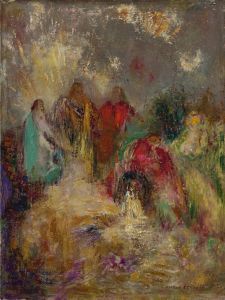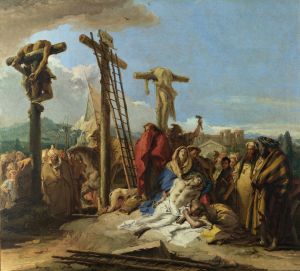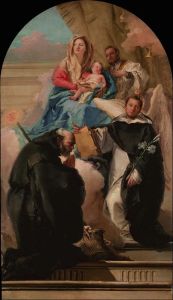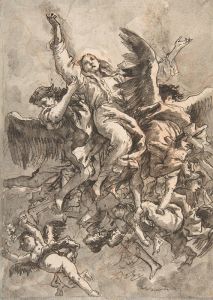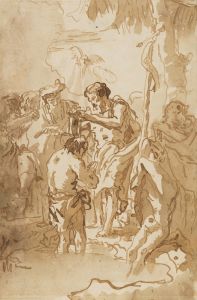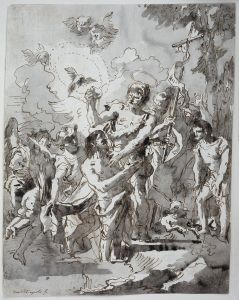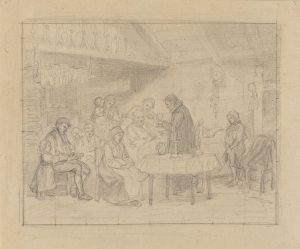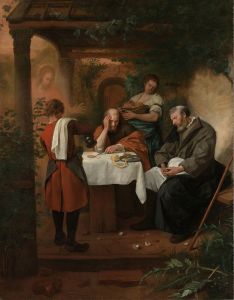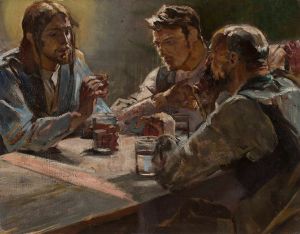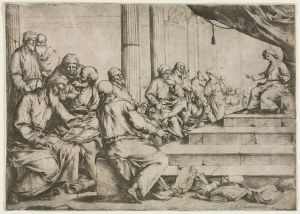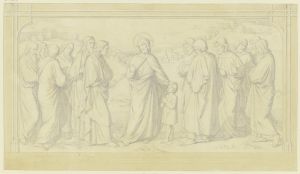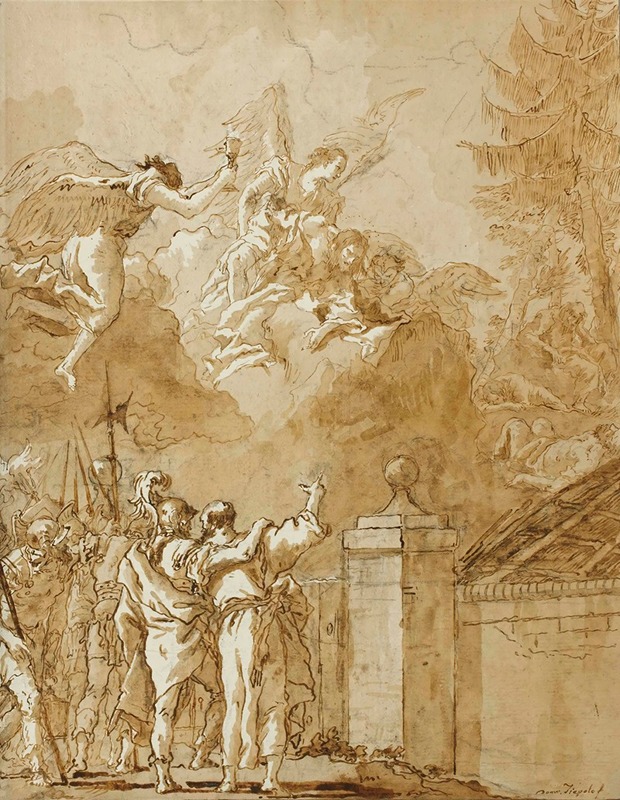
L’Agonie du Christ à Gethsémani
A hand-painted replica of Giovanni Domenico Tiepolo’s masterpiece L’Agonie du Christ à Gethsémani, meticulously crafted by professional artists to capture the true essence of the original. Each piece is created with museum-quality canvas and rare mineral pigments, carefully painted by experienced artists with delicate brushstrokes and rich, layered colors to perfectly recreate the texture of the original artwork. Unlike machine-printed reproductions, this hand-painted version brings the painting to life, infused with the artist’s emotions and skill in every stroke. Whether for personal collection or home decoration, it instantly elevates the artistic atmosphere of any space.
Giovanni Domenico Tiepolo, an Italian painter and printmaker, was a prominent figure in the 18th-century Venetian art scene. He was the son of the renowned artist Giovanni Battista Tiepolo and followed in his father's footsteps, developing a distinctive style that combined elements of the Rococo and Neoclassical movements. One of his notable works is "L’Agonie du Christ à Gethsémani," which translates to "The Agony of Christ in Gethsemane."
This painting depicts a significant moment from the New Testament, where Jesus Christ experiences profound anguish and emotional turmoil in the Garden of Gethsemane, just before his arrest and subsequent crucifixion. The scene is a poignant representation of Christ's humanity and divinity, capturing the intense spiritual struggle he faced as he prayed to God the Father, seeking strength to endure the suffering that lay ahead.
In "L’Agonie du Christ à Gethsémani," Tiepolo employs his mastery of color, light, and composition to convey the emotional depth of the scene. The use of chiaroscuro, a technique that contrasts light and dark, enhances the dramatic tension and highlights the central figure of Christ. His expression is one of deep sorrow and contemplation, reflecting the weight of the impending sacrifice.
Tiepolo's depiction of the surrounding environment in the painting is also noteworthy. The garden is rendered with a sense of tranquility and isolation, emphasizing the solitude of Christ's experience. The inclusion of sleeping disciples in the background serves as a reminder of the human frailty and the loneliness Christ felt during this pivotal moment.
The painting is characterized by Tiepolo's fluid brushwork and attention to detail, which bring a sense of movement and life to the composition. His ability to capture the emotional intensity of biblical narratives is evident in this work, showcasing his skill in conveying complex theological themes through visual art.
"L’Agonie du Christ à Gethsémani" reflects Tiepolo's deep engagement with religious subjects, a common theme in his oeuvre. Throughout his career, he produced numerous works that explored biblical stories, often imbuing them with a sense of drama and emotional resonance. This painting is a testament to his ability to interpret sacred texts with both reverence and artistic innovation.
The painting is housed in a collection that appreciates the historical and artistic significance of Tiepolo's work. It continues to be studied and admired for its technical excellence and its ability to evoke the profound spiritual themes inherent in the story of Christ's agony in Gethsemane.
Giovanni Domenico Tiepolo's contribution to religious art is significant, and "L’Agonie du Christ à Gethsémani" stands as a powerful example of his ability to blend narrative, emotion, and artistry. Through this work, viewers are invited to reflect on the themes of sacrifice, faith, and the human condition, as interpreted by one of the 18th century's most talented artists.






